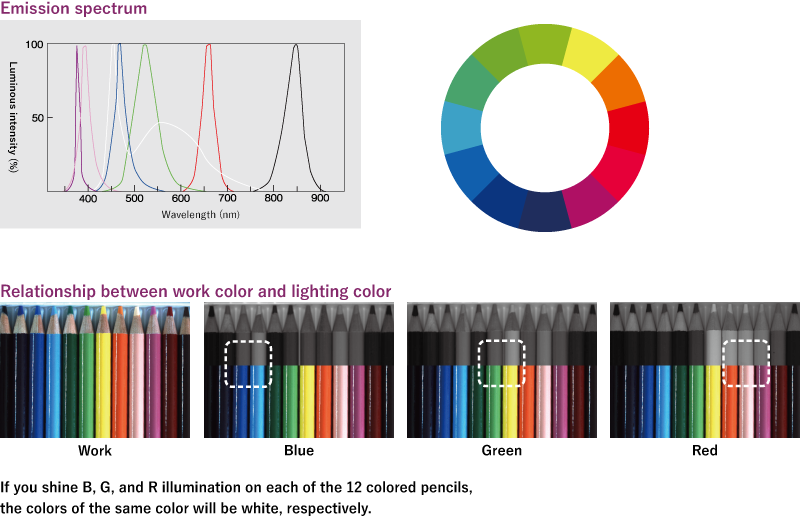Color and Contrast
A color that is in the opposite position to the work color is called a complementary color and has the effect of making that color stand out. The color next to it is called a similar color and has the effect of absorbing (blending in) the color.
Use those effects to choose a complementary color if you want the background or unwanted colors to appear black, and a similar color if you want them to be white. Also, due to the characteristics of the wavelength, the shorter the wavelength, the greater the scattering rate, so that minute scratches can be revealed. White lighting will be often used for color cameras. Thus, the lighting color is selected based on the characteristics of the work and wavelength.

